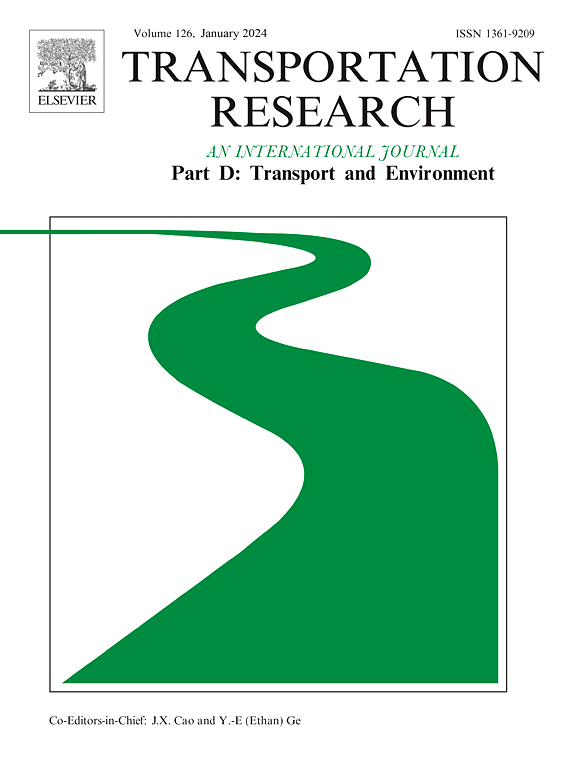Reexamining exposure from truck emissions considering daily movement of individuals
IF 7.3
1区 工程技术
Q1 ENVIRONMENTAL STUDIES
Transportation Research Part D-transport and Environment
Pub Date : 2024-10-01
DOI:10.1016/j.trd.2024.104441
引用次数: 0
Abstract
With the growing demand for urban freight transportation, trucks emit a large amount of pollutants such as particulate matters and nitrogen oxides, increasingly affecting public health. This study establishes a modelized air dispersion structure to simulate pollutant concentration distribution. By integrating multiple data sources including mobile phone signals and satellite images, we reconstruct the daily trajectories of individuals and further incorporate simulated pollution concentrations in calculating dynamic and static exposure of individuals to truck emissions. Econometric models considering spatial dependence are developed to evaluate the influencing factors and elucidate the mechanisms of pollutant exposure. Results show factors including freight demand, road network, residential and employment locations, personal commuting distance, and population age structure matter in assessing truck emission exposure. As a result, a mixture of vehicular emission standards, urban traffic control, land planning, and industrial policies is proposed to reduce truck pollutant exposure and safeguard public health.
考虑到人员的日常流动,重新审查卡车排放物的暴露情况
随着城市货运需求的不断增长,卡车排放出大量的颗粒物和氮氧化物等污染物,对公众健康的影响日益严重。本研究建立了模型化空气扩散结构,以模拟污染物浓度分布。通过整合手机信号和卫星图像等多种数据源,我们重建了个体的日常轨迹,并进一步结合模拟的污染浓度,计算个体在卡车排放中的动态和静态暴露。我们建立了考虑空间依赖性的计量经济模型,以评估影响因素并阐明污染物暴露的机制。结果表明,货运需求、道路网络、居住和就业地点、个人通勤距离和人口年龄结构等因素对评估卡车排放暴露至关重要。因此,建议将车辆排放标准、城市交通管制、土地规划和产业政策结合起来,以减少卡车污染物暴露,保障公众健康。
本文章由计算机程序翻译,如有差异,请以英文原文为准。
求助全文
约1分钟内获得全文
求助全文
来源期刊
CiteScore
14.40
自引率
9.20%
发文量
314
审稿时长
39 days
期刊介绍:
Transportation Research Part D: Transport and Environment focuses on original research exploring the environmental impacts of transportation, policy responses to these impacts, and their implications for transportation system design, planning, and management. The journal comprehensively covers the interaction between transportation and the environment, ranging from local effects on specific geographical areas to global implications such as natural resource depletion and atmospheric pollution.
We welcome research papers across all transportation modes, including maritime, air, and land transportation, assessing their environmental impacts broadly. Papers addressing both mobile aspects and transportation infrastructure are considered. The journal prioritizes empirical findings and policy responses of regulatory, planning, technical, or fiscal nature. Articles are policy-driven, accessible, and applicable to readers from diverse disciplines, emphasizing relevance and practicality. We encourage interdisciplinary submissions and welcome contributions from economically developing and advanced countries alike, reflecting our international orientation.

 求助内容:
求助内容: 应助结果提醒方式:
应助结果提醒方式:


